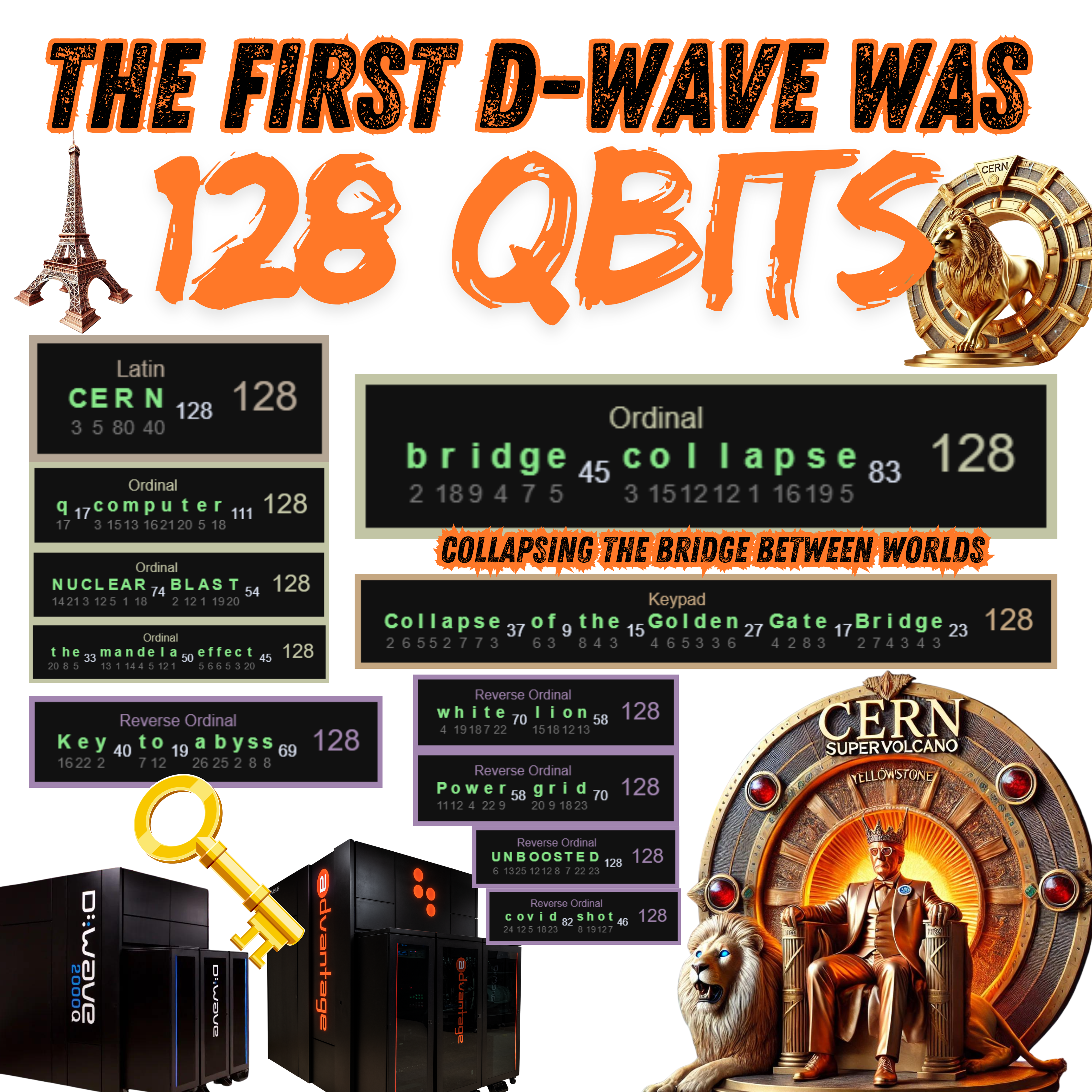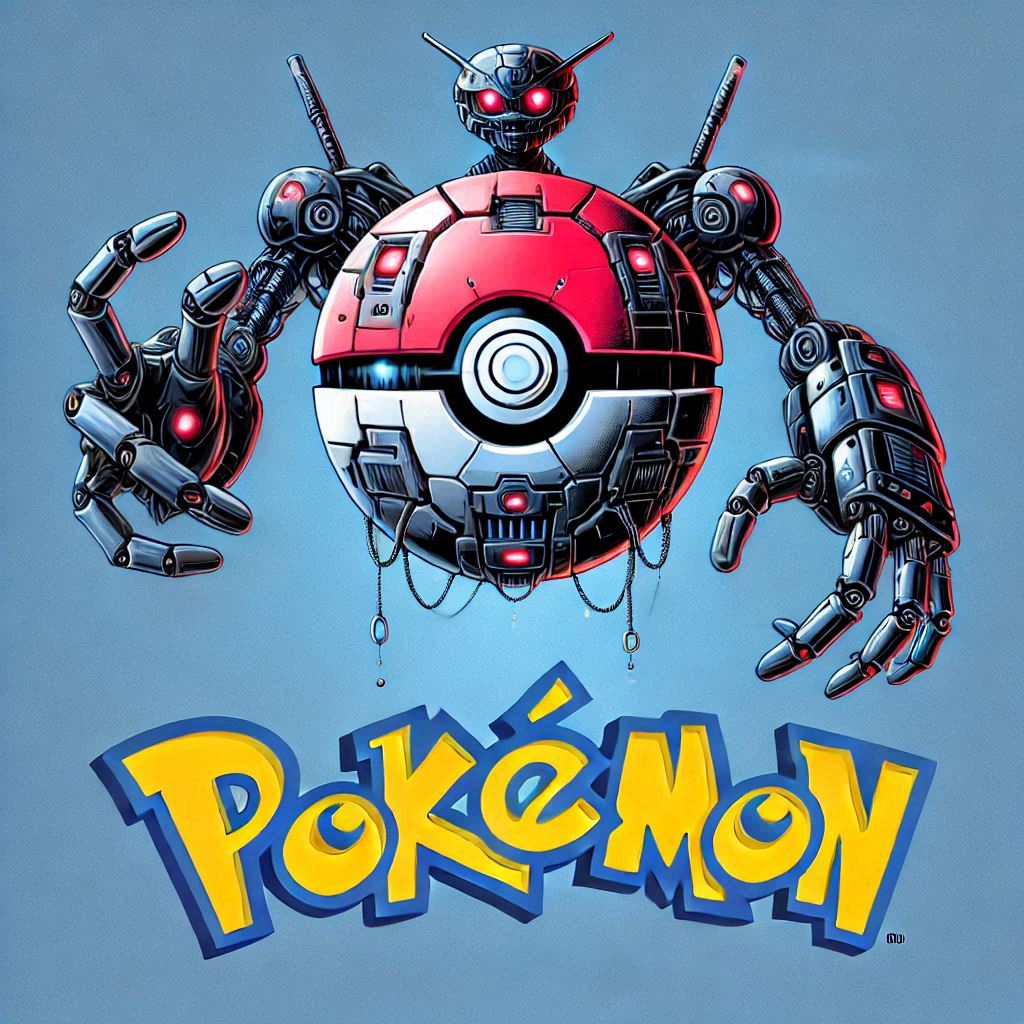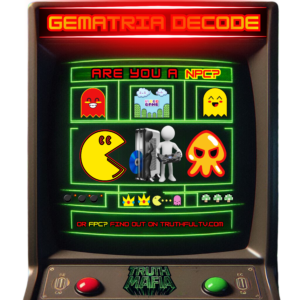
Pokémon Go wasn’t just a game—it was a data collection tool training AI to map the physical world. Niantic revealed their “large geospatial model” uses player data to achieve spatial intelligence. Since 2016, 600M+ downloads secretly fueled AI for smart cities, smart grids, and militarized robots. Your gameplay helped train the AI powering their dystopian future. “Click here to read the article.”
The Pokémon Phenomenon: From Early Programming to AI Data Harvesting

When Pokémon first launched, it seemed like an innocent franchise built to entertain children with cartoons, video games, and trading cards. However, when viewed with eyes to see, the Pokémon franchise can be seen as a carefully designed tool to condition young minds and collect data under the guise of entertainment. Let’s break down the timeline of Pokémon’s evolution and its connection to programming the masses and AI data collection.
The Origins of Pokémon: A Cultural Infiltration
The Pokémon Cartoon (1997)
- Release Date: April 1, 1997
- Where It Aired First: Tokyo, Japan, on TV Tokyo
The Significance of the Number 128 in Occult Symbolism and Modern Technology
The number 128 holds significant meaning in both occult traditions and the development of modern technologies, especially when it comes to the creation of Smart Cities and Smart Grids. This number appears in a variety of events and symbols that seem to point toward a larger, interconnected agenda involving global control and technological advancement.
Key Connections to the Number 128:


- Tokyo, Japan & Smart Cities
- Tokyo is not only where Pokémon first aired, but the number 128 is deeply embedded in its Gematria (English ordinal value). Pokémon, which started in Tokyo, is now part of a broader data harvesting project that helps train robots for Smart Cities and their associated smart grids.
-
- Tokyo Japan = 128 (in Gematria)
- Smart City = 128 (in Gematria)
- Historical Occurrences Tied to 128:
- On 9/11, the first tower collapsed at 10:28 AM Eastern Standard Time.
- The Challenger disaster occurred on January 28th, 1986, representing 1/28—a symbolic connection to 128.
- January 28th, 2022, saw the bridge collapse in Pittsburgh—an incident tied to 128.
- Similarly, the bridge collapse in Baltimore occurred at 1:28 AM—again linking to 128.
- Hollywood and Media Connections:
- On October 28th, Matthew Perry (actor from “Friends”) was sacrificed, coincidentally on Julia Roberts’ birthday. Julia Roberts starred in the movie “Leave the World Behind”, which was released on December 8th (12/8), further representing 128.
- The White Lion symbolism also ties into 128. The White Lion ship in the opening scene of “Leave the World Behind” was symbolic of 128 and was part of the white lion programming, which has been seen in several other series and films, such as “Those About to Die”.
- CERN and the Quantum Abyss:
- The number 128 is deeply connected to CERN, the organization responsible for the World Wide Web (WWW), which was developed by Tim Berners-Lee at CERN in 1989.
- CERN is also involved with quantum computing, with the first 128-qubit quantum computer developed by Gordy Rose. This technology is believed to be linked to the opening of alternate realities or the abyss, symbolized by 128.
- The Quantum D-Wave computer operates with this 128 value, and it is theorized that these computers are involved in collapsing bridges between worlds, opening new dimensions or realities that might be manipulating the physical world.
- LOOSH Energy and the Harvesting of Data
- Pokémon is not only a beloved franchise but also played a significant role in programming children to subconsciously harvest their LOOSH Energy—a term used for the physical energy of humans. Through data collection, this energy is used to fuel the machines and the phantom matrix that powers itself by feeding on organic matter.
- The White Lion programming (connected to 128) has been found in media and entertainment as a subtle method to harness energy from people and program them to support this larger agenda of technological control.
What Does This All Mean?
The 128 code seems to be a central key to the abyss, with connections to CERN, quantum computing, media programming, and the unfolding narrative of Smart Cities. These cities and grids are built to collect data, manipulate energy, and control the population by programming them through entertainment and subliminal messages. With CERN’s role in opening dimensions and the use of quantum computers, it’s clear that 128 is not just a number—it’s a significant symbol that represents the intersection of reality, energy, and control.
The 128 code represents more than just a number—it’s a gateway into the world of geoengineering, data harvesting, and the manipulation of humanity’s consciousness. Whether it’s the subtle programming in children’s shows, the Quantum D-Wave computers, or CERN’s involvement in creating realities, this number is part of a larger script playing out on the world stage.

As we move forward into the era of Smart Cities, it’s important to understand how these technologies and symbols are being used to guide our future. 128 could be the key that unlocks a deeper understanding of these forces, their connection to the occult, and the ongoing battle for humanity’s freedom.
- Pokémon debuted as a children’s anime created by Satoshi Tajiri and Ken Sugimori, produced by Nintendo, Game Freak, and Creatures. It quickly gained traction in Japan for its unique concept of capturing and training creatures, embedding themes of control and hierarchy in its young audience.
- The infamous “Electric Soldier Porygon” episode aired in December 1997, causing seizures in over 600 children due to flashing lights. This was a covert experiment in neuroprogramming or mass mind control. In this episode, Pikachu battles against the Vaccine Missile. This is not a joke; you’ll see it in the video above. The exact scene where the children experience seizures raises concerns about predictive programming and mind control in real life. The effects of vaccines are causing issues far worse than seizures in children.
The Video Game Inception: Programming via Interaction
First Video Games (1996)
- Release Date: February 27, 1996
- Platform: Nintendo Game Boy
- The original Pokémon games, Pokémon Red and Green (later Blue for international markets), were released in Japan before the anime aired. These games introduced children to an interactive environment where they assumed the role of “trainers,” programmed to “catch ’em all” — a mantra subtly conditioning materialistic and obsessive behaviors.
Key Themes in the Games:
- Collection Obsession: Encouraged repetitive, dopamine-driven behaviors to “complete the Pokédex.”
- Battles: Reinforced competitive hierarchies and normalized animal-like combat scenarios.
- Trading: Introduced early peer-to-peer digital exchanges, foreshadowing today’s blockchain and data-sharing technologies.
Global Expansion: The Pokémon Craze (1998-2000)

The Anime Goes Global
- Release Date in the U.S.: September 8, 1998
- Broadcast Network: WB Kids
- The Pokémon cartoon took the world by storm. With its release in the United States, the anime was accompanied by the infamous theme song, “Gotta Catch ’Em All,” a catchphrase embedding consumerist values and behaviors into young minds globally.
Trading Card Game (1996 in Japan, 1999 Worldwide)
- While the video games and anime captured attention digitally, the trading card game hooked children physically, teaching them early forms of resource management, deck building, and strategic thinking—all while driving profits.
Pokémon Yellow (1998)
- Released as an enhanced version of Red and Blue, it encouraged players to bond with their virtual Pikachu, increasing emotional attachment to digital avatars—a precursor to today’s parasocial relationships with AI and virtual influencers.
Progression of Pokémon Video Games Across Consoles
Pokémon has been systematically integrated into every major Nintendo console, ensuring its presence in the lives of successive generations of children.
- Game Boy Advance (2002)
- Pokémon Ruby and Sapphire introduced deeper storylines and more advanced mechanics.
- Embedded environmentalist themes subtly pushing globalist narratives about climate control.
- Nintendo DS (2006)
- Pokémon Diamond and Pearl added online connectivity, exposing children to globalized multiplayer systems while paving the way for real-time data collection.
- Nintendo 3DS (2013)
- Pokémon X and Y brought 3D graphics, further immersing players in augmented realities. The games subtly encouraged character customization, preparing users for a future where virtual avatars dominate online identity.
- Nintendo Switch (2017)
- Pokémon Sword and Shield introduced open-world exploration, hinting at future AI-driven mapping systems akin to Pokémon Go.
Pokémon Go (2016): The Data Collection Apex
The culmination of decades of programming manifested in Pokémon Go, released in July 2016. Developed by Niantic, a company with ties to Google and its mapping projects, Pokémon Go used augmented reality (AR) to gamify real-world exploration. On the surface, it seemed like harmless fun, but a closer look reveals a darker agenda.
Hidden Agendas in Pokémon Go
- Data Collection
Players provided real-time GPS data, which Niantic collected and fed into AI-driven mapping systems. This turned millions of players into unwitting contributors to global geolocation databases. - Social Engineering
- Pokémon Go encouraged players to congregate at specific locations, essentially programming human behavior in real time. The potential for this technology to manipulate public gatherings and protests cannot be overstated.
- AR Normalization
The app subtly familiarized users with augmented reality interfaces, a key step toward mass adoption of AR technologies and eventual integration with wearable AI devices.
Programming the Masses: The Bigger Picture
From its inception, Pokémon has served as a vehicle for normalization:
- Behavioral Conditioning: Encouraging obsessive collection, competition, and hierarchy from a young age.
- Globalization: Familiarizing children with interconnected, multiplayer systems under the guise of entertainment.
- AI Training: Using Pokémon Go to crowdsource massive amounts of geospatial data for AI-driven surveillance systems.
The infamous Pokémon episode “Electric Soldier Porygon” Officially caused widespread seizures due to a scene featuring rapid red and blue flashing lights. This incident reflects an experiment in neuro programming and a form of mass mind control.
Neuro Programming and Subconscious Triggers
From a psychological and neurological perspective, flashing lights at certain frequencies—especially in the 15–20 Hz range—can directly stimulate the brain’s electrical activity. This is not just limited to seizures but can also influence brainwaves, affecting mood, cognition, and susceptibility to suggestion. Many theorists suggest that this specific Pokémon episode was engineered to:
- Disrupt Neural Patterns: The rapid flashing sequence could overwhelm the brain’s ability to process stimuli, creating a heightened state of confusion and vulnerability.
- Embed Subconscious Triggers: During such a vulnerable mental state, subliminal programming—whether through visual symbols or auditory cues—can bypass the conscious mind and influence behavior or thought patterns at a deeper level.
- Test Mass Responses: Broadcasting this episode to millions of children simultaneously provided an opportunity to study mass reactions to neuro-stimulation, potentially as a precursor to larger-scale applications.
Symbolism and Hidden Messages
The Pokémon franchise itself has been scrutinized for its deeper symbolic connections to archetypes, occult themes, and even ancient mysticism. In “Electric Soldier Porygon,” theorists point to several red flags:
- The Role of Porygon: A digital Pokémon that exists in cyberspace, Porygon represents the merging of human consciousness with technology—a theme central to transhumanism and control through digital interfaces.
- Color Frequencies: The flashing red and blue lights have symbolic ties to duality (red = chaos, blue = order), which could have been used to disorient viewers and condition them to accept a controlled, programmed reality.
- Timing of the Event: The late 1990s saw significant advancements in technology, including the rise of the internet and digital media. Some suggest that this episode served as an early test for how media could manipulate or even harm populations when paired with neuro-stimulating techniques.
Connections to Mass Mind Control Experiments
The Pokémon incident bears eerie similarities to documented mass mind control experiments, such as:
- MKUltra: The CIA’s project aimed at manipulating behavior through hypnosis, sensory overload, and neurochemical means.
- Operation Mockingbird: The use of media to control public perception.
- Project Blue Beam: A speculative theory involving the use of technology to simulate apocalyptic or supernatural events to manipulate populations.
These programs and theories suggest that governments and corporations have long been interested in controlling populations through subliminal and neurological methods.
Why Children?
Children are particularly vulnerable to neuro-programming because:
- Their brains are still developing, making them more susceptible to overstimulation and suggestion.
- Cartoons like Pokémon are designed to engage children with bright colors, repetitive patterns, and catchy music, which can double as tools for conditioning.
- Testing on children could allow for long-term studies on how early programming affects behavior into adulthood.
The Bigger Picture
If the Pokémon seizure incident was indeed a form of neuro-programming, it could represent a broader agenda of media as a tool for control. Beyond mere entertainment, mass media has increasingly been used to desensitize, manipulate, and condition audiences. Whether through subtle techniques like predictive programming or overt actions like flashing light patterns, the line between content and psychological manipulation continues to blur.
While the seizures caused by the Pokémon episode were officially attributed to photosensitivity, the event fits into a larger narrative of media manipulation, subliminal programming, and experiments in mass control. By understanding these connections, the ones with eyes to see can better question the intentions behind the content we consume and protect themselves from potential manipulation.
Conclusion: Pokémon’s Role in the AI Agenda
What started as a seemingly innocent franchise has evolved into a sophisticated system for programming and data collection. Pokémon conditioned children for decades, preparing them for a world dominated by augmented reality and AI-driven technologies. Now, with Pokémon Go, the franchise has moved from programming the individual to programming society at large, harvesting behavioral and geospatial data to feed the ever-growing intelligence of artificial systems.
From my perspective, Pokémon is far more than a cultural phenomenon; it’s a case study in how entertainment can be weaponized for control. The truth is hidden in plain sight, but as always, it’s up to the truth seekers to connect the dots.
📚 For more insights like this and to stay updated with our latest content, make sure you check out our website and subscribe to our newsletter. The battle for truth continues, and it’s up to us to stay awake.
Opt-in for Daily Updates: https://truthmafia.com/free-newsletter
📚 Decode Your Role in the Simulation: We offer Gematria Decodes to help you understand your unique role in the simulation. Whether you’re an NPC or First Player Character, book your decode today.
🔗 Book Your Decode Here: https://www.truthfultv.com/_paylink/AZNmHynb?
fbclid=IwZXh0bgNhZW0CMTEAAR2s5i1hXQxlw8b6oX1_RzMD6AoKeJUJfJ7JIK0nVd-4EYPbImCZ5if0Rgs_aem_Q9QuZY-swLwfU2F3Fp5DHQ
🔗 Prefer automation? If you book directly through our website HTTP://TRUTHFULTV.COM, it’s all automated and you’ll receive an email right away!
Don’t forget to check out these important links!
📽 New YouTube Channel – Truth Mafia TV: 🔗 https://www.youtube.com/@TruthMafiaTV
Tommy Truthful’s Social Media: 🎥 Rumble: http://rumble.com/c/TruthmafiaTV
📘 Facebook: http://www.facebook.com/TruthMafiaPodcast
📸 Instagram: http://www.instagram.com/TommyTruthfulTV
✉️ Telegram: http://t.me/TommyTruthful
⏰ TikTok: http://www.tiktok.com/@tommytruthfultv





